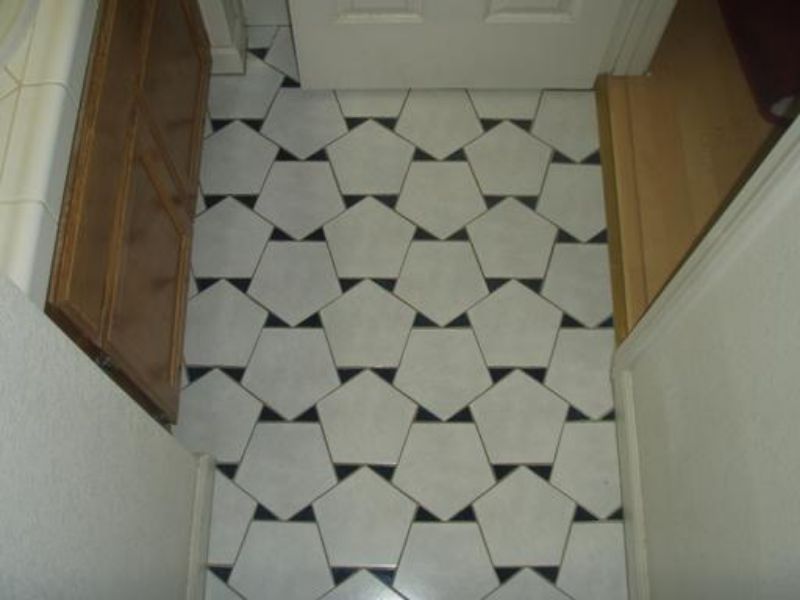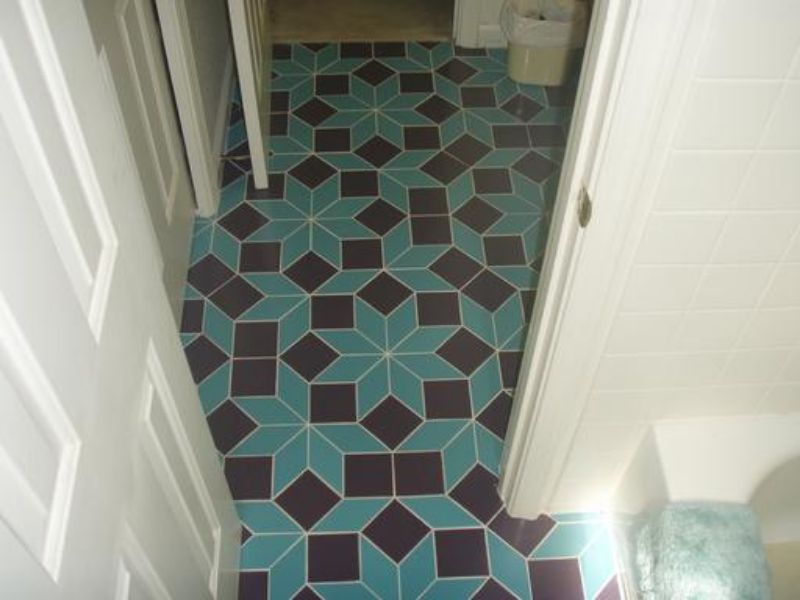Get Geek Bathroom Inspiration from 3 Awesome Mathematical Tile Patterns

Tiling a bathroom may sound like one of the most boring do-it-yourself tasks you could try, so why not make it a bit more interesting and install something that is as much a geek-inspired installation piece as pragmatic tile patterns. Wondering how to start your next tile project? How about this: instead of patterning your work after some famous mosaic or work of ceramic art, creatively explore complex geometries as they apply to your otherwise-simple ceramic tile floors.
Chez Kupberberg-Zieve created his first mathematical bathroom (in the picture at the top of the page) with his father over a decade ago. It represents their “conjecture for the best packing of regular pentagons in the plane.” They later discovered “that other people have also discovered this packing, including the physicist Subir Sachdev.”

“A Sacramento area contractor (Patrick Montgomery and his assistant Mike) put in this floor for us in the summer of 2007 following my design,” Zuperberg-Zieve says of this one. “The design is inspired by, and is a simplification of, mosaic tiles in the Alhambra in Spain.”

At first glance, these tile patterns do not look that extraordinary – one could image going to the local tile shop and simply buying tiles to fit these generic patterns. There is a bit more mystery to them, however, than you might guess. “This design is a quasiperiodic tiling discovered by Robert Ammann,” Kuperberg-Zieve says of the green and black pattern above. “It’s like the more famous Penrose tiling by rhombuses, except that it has 8-fold symmetry instead of 5-fold symmetry.”
While the patterns are cool and compelling, you may wish, however, to choose a more convincing color scheme in for your own home version in order to highlight the geometric planes and make them look more three-dimensional. Applying mathematics to floor tiling can be as simple or complex as you like, from pentagonal shapes to tessellations, and it’s fun to imagine math geeks recognizing the tile patterns when they visit.




